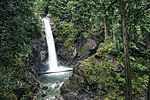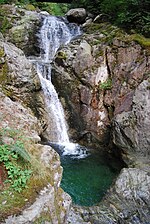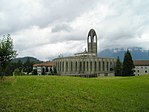Hatzic Valley

The Hatzic Valley is the southerly, lowland portion of the Fraser Valley Regional District Electoral Area "F" of British Columbia's Lower Mainland. The valley was carved as a result of southward glacial action, being "centered along a low‐lying glacial trough that extends from Stave Lake to the Fraser Valley."The perimeter of Hatzic Valley is described in the current British Columbian Official Community Plan document “Official Community Plan for Hatzic Valley, Electoral Area “F” Bylaw No. 0999, 2010”, published by the Fraser Valley Regional District, and which illustrates the valley as occupying the area from the southeast point of Stave Lake in the northwest to Hatzic Lake in the south.The valley is flanked on the eastern side by the Douglas Ranges, the ridge nearest the valley known as Durieu Ridge, the southern point of which forms Dewdney Peak. The valley includes the area occupied by Davis Lake Provincial Park and Mount St. Benedict in the north and that of Cascade Falls Regional Park in the northeast. The valley measures about 12.5 kilometers long from Davis Lake to Hatzic Lake, and about 2.5 kilometers wide at Durieu. The valley is home to approximately 1,300 people.Hatzic Valley in turn comprises various unincorporated communities, specifically Hatzic Prairie in the south, the town of Durieu in the center, and the localities of McConnell Creek and Miracle Valley in the north.
Excerpt from the Wikipedia article Hatzic Valley (License: CC BY-SA 3.0, Authors, Images).Hatzic Valley
Degraff Road, Area F (McConnell Creek/Hatzic Prairie)
Geographical coordinates (GPS) Address Nearby Places Show on map
Geographical coordinates (GPS)
| Latitude | Longitude |
|---|---|
| N 49.233333333333 ° | E -122.23333333333 ° |
Address
Degraff Road
Degraff Road
V2V 0A8 Area F (McConnell Creek/Hatzic Prairie)
British Columbia, Canada
Open on Google Maps






